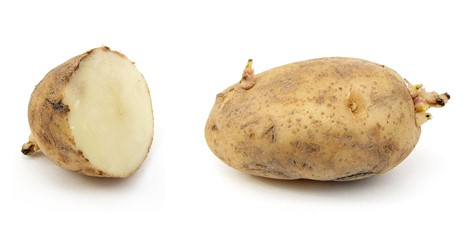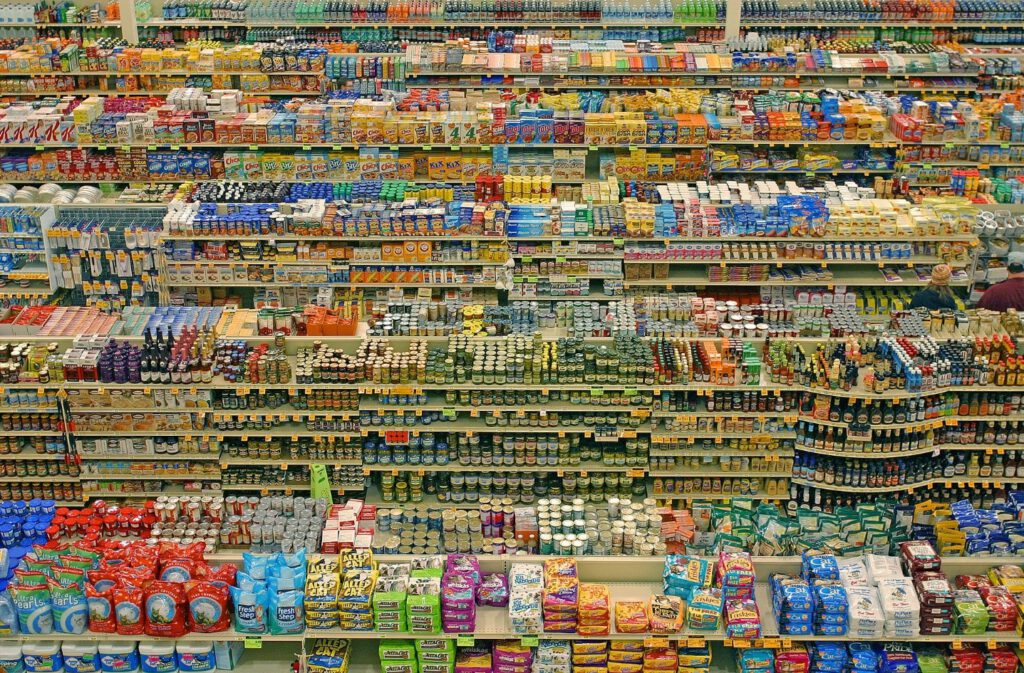Potatoes were having a hard time in 18th century Prussia. To us nowadays, this seems silly – potatoes are resilient, versatile, and they taste good if they’re prepared well. But farmers back then weren’t convinced (and probably didn’t know about french fries), and termed potatoes as the devil’s apple (it came from heathen lands and grew fruit below ground where nobody could see).
You would think that people suffering from famine would take what they get, but no. The farmers, despite the “Kartofelbefehl” 1756 by Frederick The Great that mandated potato cultivation, refused to grow the tuber. And so, Frederick has changed his tactics: Since ordering people didn’t work, he employed a strategy that made the grubby tuber irresistible; he cultivated potatoes on his own royal fields, in secret and with guards, and told the guards to be, let’s say, not as conscientious as they should be…

And thus, in late 18th century, the first potato nudge was born. Frederick made the potato attractive and interesting by making it hard to get.

Fast forward a few centuries, and science tells you – arguably in a way less understandable language – the same thing that Frederick knew back then: people want attractive things.
Not only attractive things, though, they also want convenient and easy things. They also want the things that everyone else wants.
Putting it this way sounds like a no-brainer and frankly it is, but very few people understand the strength behind making something attractive, easy, and social.
With nudging, this is what we are consciously trying to achieve: make the desired behavior (eating a potato) an easy, attractive, and/or social thing to do, while not constraining people’s choices (nobody forced the 18th century Prussian farmers to eat the potato…except for the famine that is). This is usually done by altering choice architecture – how the choices within a certain environment are displayed.
As the story above illustrates, the principles of nudging are nothing new. And even if you consider the current era, marketers and salesmen were employing the principles long before they were portrayed in the 2008 book Nudge by Cass Sunstein and Richard Thaler (where the origins of “nudging” lie). The supermarket, for instance, is a wonderful way to comprehend nudges and the mysterious choice architecture I mentioned a few lines above.
Where are the products that have the highest margin? On eye level or at the end of the isle.
Where are the products that people buy anyway – like pastry, cans, etc. – but that aren’t as attractive for the supermarket’s wallet? You have to stoop down to reach them, or go in a remote corner of the supermarket to get them.
What about all the red stickers popping into sight as you browse the rows of products? They guide your attention to products you perhaps wouldn’t ordinarily buy but hey – they are now reduced! – so you go ahead and grab the packet of gummi bears that will gather dust in the drawer for a few years until you offer them during a tabletop night.

Supermarkets have mostly financial goals – they want to increase revenue and patronage. And while setting financial goals is important if you run a business, we now know that it can’t be the only goal. Our planet has limited resources, so sustainability must make the priority list. What about health of the customers? If you make unhealthy products attractive so that people buy them, and you do it for an extended period, you’ll end up with an overweight, diabetic, and unhealthy populace that increasingly eats away bigger and bigger chunks of healthcare costs. So, health must make the priority list as well.
We could spin this exercise further and further, adding important goals as we go (moral aspects come to mind), but it would make the article rather unreadable. The point I want to make is this: nudging is a blind tool, that can be used for good and bad outcomes. So, it makes sense to use it wisely.
And this is what we’re trying to do in our small project group – develop healthy and sustainable nudges not in supermarkets or around potato fields, but in our school Cafeterias, Mensas.
We ask ourselves questions such as:
- How to motivate people – who are often cognitively tired after enduring a series of lectures – to grab the healthier meal rather than the convenient and easy one?
- How to make people consider sustainable options such as vegan dishes in larger numbers?
- How must the environment – and the choices within it – be structured so that people are guided towards better (in terms of health, sustainability, morality) choices?
Those are tiny examples that show the potential of nudging. How do these questions look in concrete terms – in Alte Mensa, Reichenbach Mensa, or any other Mensa that you fancy – is what we try to develop in our small project group.
Why do we want to do it? Because nudges work in guiding people’s behavior to healthier and more sustainable choices.
For example, Broers and colleagues calculated the effects of nudging at d = 0.39 95% CI = 0.137- 0.645] – a medium effect size.
These are big numbers, especially if you think on the level of universities, workplaces, cities, or even nations.
We are far away from 18th century Prussia – at least in our slice of the world, we are not struggling with famine. But we have a distinct set of problems when it comes to nutrition. Instead of too little, we often have too much. Instead of eating whole foods that are nutritious, we often eat processed food that lacks nutrients. Instead of following a primarily plant-based diet, we’re overconsuming animal protein that clogs our arteries and makes animals suffer.
Changing ingrained behaviors is hard – anyone who tried to change their diet or quit smoking will tell you that. But it doesn’t have to be hard, if the desired behavior is easy to do, attractive, and involves people close to us.
We have the tools to make the potato attractive again. The question is: will we be daring enough to do so?
This is the first in a series of blog posts that our group releases. In the future, we plan on explaining more in-depth how the ideas I mentioned could look in Mensas nearby, so stay tuned!
